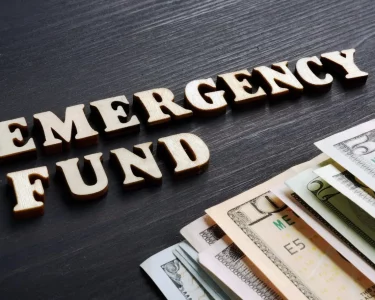War is an expensive business, and historically, countries have resorted to risky financial measures to fund their military operations. However, Ukraine’s monetary authority has announced a bold new approach – no more dangerous financial maneuvers for war expenses. In this blog post, we’ll explore the reasoning behind this decision and how it could potentially impact Ukraine’s economy and military capabilities in the future. So sit back, grab your popcorn, and join us as we dive into this fascinating topic!
No more risky financial measures for war expenses, says Ukraine’s monetary authority
Ukraine’s monetary authority has announced that it will no longer be using risky financial measures to cover war expenses, instead relying on a reserve fund. This decision comes as a relief to the country, as it had been facing mounting debts and speculation over its ability to pay its bills. The move is part of a larger overhaul of Ukraine’s finances, aimed at stabilizing the economy and restoring investor confidence.
The reserve fund will consist of money raised from privatizations and other sources, and will be used to cover short-term expenses like salaries and pensions. It will also help Ukraine pay off its debt obligations and reserves. This new strategy is in line with IMF recommendations, which suggest that countries should use more stable funding sources for long-term investments.
This change represents a significant shift for Ukraine, which has been using increasingly risky methods to cover its costs since the crisis began. These measures have included selling assets such as oil refineries, stakes in private companies, and state-owned banks. This approach was hoped to raise money quickly but has often resulted in large losses for the government.
This latest announcement may help stabilize Ukrainian currency and credit markets while providing much-needed financial stability for the country. It also marks an important step in restoring investor confidence in Ukraine’s future prospects.
Ukraine to stop using IMF funds in March
Ukraine’s monetary authority said on Monday it will stop using IMF funds in March, following the completion of a three-year reform program. The move comes after the International Monetary Fund (IMF) said in its latest review that Ukraine had met all conditions for continued assistance. “The [monetary authority] announces that from March 1, 2017, it will stop using IMF resources,” the authority said in a statement. The move is not unexpected, as Ukraine has been moving away from IMF loans and payments since early 2016. In January of that year, Ukrainian President Petro Poroshenko announced plans to shift away from dependence on international financing and instead rely on domestic sources. Since then, the country has made strides in reforming its economy and implementing policies aimed at reducing its public debt burden.
Russian aggression tests Ukraine’s resilience
Ukrainian authorities have come up with a plan to avoid any more risky financial measures for war expenses. According to the head of the country’s monetary authority, Valeriya Gontareva, the authorities will resort to issuing treasury bonds, which are considered much safer than borrowing from international financial institutions. Gontareva made this announcement during her meeting with representatives of the National Bank of Ukraine (NBU) on August 12. The monetary authority has already issued treasury bonds worth 2 billion UAH ($57 million) in order to cover part of government expenses until September 30.
Gontareva also said that using treasury bonds is one way to avoid raising interest rates too high and endanger the country’s economy. This decision comes as a surprise, as earlier this year Ukrainian authorities were considering borrowing from international financial institutions in order to cover their war expenses. However, after Russia invaded eastern Ukraine and started shelling Mariupol, Kyiv decided not to take such a risk and rely on its own resources.
Ukraine’s economy rebounds from crisis
Ukraine’s economy rebounds from crisis
The Ukrainian currency, the hryvnia, strengthened against the U.S. dollar on Wednesday after the central bank announced it would no longer require financial institutions to make risky measures to cover war expenses. This comes as a relief to businesses and individuals who have been struggling with high prices and scarce goods. The central bank has also pledged not to devalue the currency again in the near future.
“This is a very important step for Ukraine because it removes one of the risks that businesses and individuals have faced since the beginning of the crisis,” said Natalia Yermolenko, an economist at IHS Country Risk. “The decision to stop using risk management measures should help boost economic activity.”
The decision by Ukraine’s monetary authority comes after years of austerity measures that have taken a toll on the country’s economy. Inflation has reached almost 50 percent, while unemployment is above 20 percent. The hryvnia has lost more than half its value since April 2014, when protests against then-President Viktor Yanukovych turned into a civil war.
Despite these challenges, Ukraine’s central bank believes that ending reliance on risky measures will increase investment and spur economic growth. “If we want an accelerated economic revival…it is crucial that banks do not need to resort to [risk management] techniques,” said Valeriya Gontareva, deputy head of the central bank. “Otherwise they might stay closed for an extended period of time
The future of the Ukrainian currency
Ukraine’s monetary authority has announced that it will no longer resort to risky financial measures in order to finance the country’s war expenses. The decision was made after the Ukrainian hryvnia lost more than half of its value against the US dollar since the start of the crisis. The authorities believe that this trend is unsustainable and will eventually lead to economic instability. Instead, they plan to rely on international financing mechanisms, as well as on domestic sources of revenue.




